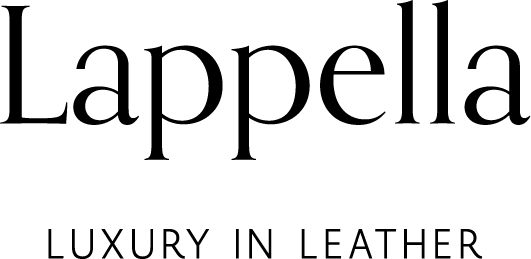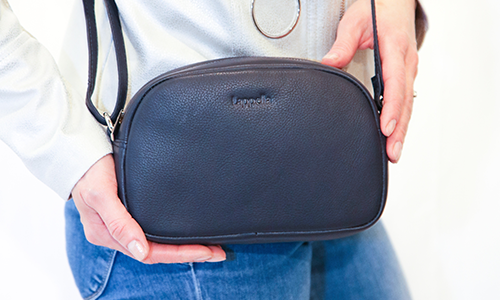The soft leathers used to produce Lappella products are very high quality with a luxurious natural appeal. The skins are extremely tactile, butter soft but highly durable.
Over time our soft leather will develop a natural patina with wear which is part of the natural ageing processing making your leather accessory even more attractive.
Although we select only the very best skins, leather is a natural material, and therefore the surface may contain some minor imperfections and colour. This is part of the natural beauty of leather and which makes each Lappella soft leather handbag and accessory unique.
Leather is a by-product of the food industry. All the skins we use originate from cows farmed for meat, not for leather accessories!
Highly skilled leather technicians are able to save animal hides from being disposed of in landfill. They transform something that is ugly and rough into a beautiful tactile product. The tanneries effectively recycle the skins that otherwise would go to waste.
Many of the processes used in our tanneries in India are natural. The skins are dried in the open air from the heat of the sun, at the same time being stretched to make them smooth and soft. Considerable advancements have been made in leather processing including the impact of chemicals, testing of toxicity of these chemicals and care over water passing these chemicals into the environment.
The leathers we use are Valentino, Veg Tan, Croc print and Hair on. Valentino is our butter soft leather, Veg tan has a two tone appearance, croc has a polished croc print on cow hide and hair on is printed with leopard or cow print.
The type of tanning used determines the appearance of the skin. Tanning processes largely differ in which chemicals are used in the tanning liquor.
Where the product requires a soft supple leather that holds it shape and tends not to discolour chrome-tanning is used. For products requiring firmer leathers and a more natural two-tone appearance, vegetable tanning is used.
Valentino and Croc are chrome-tanned due to the luxurious butter-soft nature of the bags. These leathers hold their colour extremely well giving a deep, rich appearance. The exception to this are the tan-coloured accessories which are vegetable tanned as the tan colour looks much more appealing with a two-tone patina.
The tanning processes are explained below.
Chrome-tanned leather is tanned using chromium sulphate and other chromium salts. It is also known as "wet blue" for the pale blue colour of the undyed leather. This is the most common method in modern use. It is more supple and pliable than vegetable-tanned leather and does not discolour or lose shape as drastically in water as vegetable-tanned. The method was developed in the latter half of the 19th century as tanneries wanted to find ways to speed up the process and to make leather more waterproof. Chrome tanning allows leather to be created that produces the luxurious soft leather handbags.
Vegetable-tanned leather is tanned using tannins extracted from vegetable matter, such as tree bark prepared in bark mills. It is the oldest known method. It is supple and light brown in colour, with the exact shade depending on the mix of materials and the colour of the skin. The colour tan derives its name from the appearance of undyed vegetable-tanned leather. Vegetable-tanned leather is not stable in water; it tends to discolour, and if left to soak and then dry, it shrinks and becomes harder.
Cowhide with the hair on requires the most uniform of cowhides as there is no print or finish applied to leave the hairs of the animal intact. An animal print is then applied to produce the striking appearance of this leather.


